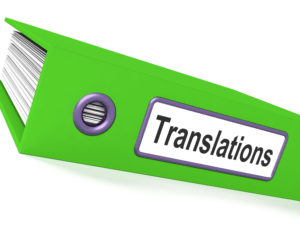Quick links, bringing you great articles on writing from all over the web.
Hallelujah and Amen! I know this is about romantic relationships so it might not apply to everyone but I feel what Bella Pope is preaching. I see so many books with obviously unhealthy attitudes about sex and relationships that I had to share her post from The Write Life.
~ * ~
5 Huge Mistakes Ruining the Romantic Relationships in Your Book
by Bella Pope
 I’ll be the first to admit that there’s a serious problem with romantic relationships in literature nowadays.
I’ll be the first to admit that there’s a serious problem with romantic relationships in literature nowadays.
And worse, this issue seems to be overlooked by the large majority of writers — until it’s too late, that is.
The problem: The unrealistic and unhealthy portrayal of romantic relationships.
There. I said it and now people can take notice because yes, there is a serious lack of realism when it comes to the romantic relationships in books..
Authors are writing relationships that are meant to be exciting and intense, but their execution of those couples can be flawed in sometimes very harmful, although unintentional ways.
There’s nothing wrong with writing romance. In fact, adding a romantic relationship to your book can do it some good. The dynamic of love can:
Read the full post on The Write Life!

 I love it when a story idea grips me. Often, it starts with one small thing…a sound, or an image flash in my brain. Sometimes I’ll get both. The experience is so utterly sensory the real world is momentarily forgotten. Maybe I’ll see and hear the ominous flutter of a plastic grocery bag caught in a tree branch on a windy day. Immediately I’ll start to “know” things: there’s water nearby. A dead body lays in the reeds, a teenage girl. A boy will find her, one who has lost the ability to speak. Snippets trickle in, clues of the story ahead. Excitement builds. I’m sure it’s a similar process for many of you.
I love it when a story idea grips me. Often, it starts with one small thing…a sound, or an image flash in my brain. Sometimes I’ll get both. The experience is so utterly sensory the real world is momentarily forgotten. Maybe I’ll see and hear the ominous flutter of a plastic grocery bag caught in a tree branch on a windy day. Immediately I’ll start to “know” things: there’s water nearby. A dead body lays in the reeds, a teenage girl. A boy will find her, one who has lost the ability to speak. Snippets trickle in, clues of the story ahead. Excitement builds. I’m sure it’s a similar process for many of you. Today’s guest post is by Piers Golden.
Today’s guest post is by Piers Golden.

 Hello, friends! Time for another #StorySocial recap. Never heard of it?
Hello, friends! Time for another #StorySocial recap. Never heard of it? Let’s start with some cold reality: My 2017 Q2 sales report is in.
Let’s start with some cold reality: My 2017 Q2 sales report is in. 5 Writing Tips: Harlan Coben
5 Writing Tips: Harlan Coben
 You’re
You’re  The relationship of writer to book-in-progress reminds me of a marriage. As opposed to a date.
The relationship of writer to book-in-progress reminds me of a marriage. As opposed to a date.  Scene breaks and transitions allow us to experience things happening in different places and times, and to different characters. Writing good scene breaks and transitions will keep your story moving, even as you switch between settings (places and times) and viewpoints. Read tips and illustrative examples:
Scene breaks and transitions allow us to experience things happening in different places and times, and to different characters. Writing good scene breaks and transitions will keep your story moving, even as you switch between settings (places and times) and viewpoints. Read tips and illustrative examples: As an editor, I read a lot of pitches.
As an editor, I read a lot of pitches. by
by Imagine you walk into a candy shop, but what you discover inside, instead of candy, is display after display of subplots. Enough to make any writer’s mouth water, right? Writers love the idea of subplots. They’re rich, juicy, complex, and full of opportunities for taking your story to the next level. But organizing subplots, or even just figuring out what your subplots are? That can sometimes be trickier.
Imagine you walk into a candy shop, but what you discover inside, instead of candy, is display after display of subplots. Enough to make any writer’s mouth water, right? Writers love the idea of subplots. They’re rich, juicy, complex, and full of opportunities for taking your story to the next level. But organizing subplots, or even just figuring out what your subplots are? That can sometimes be trickier.